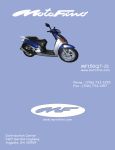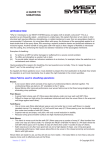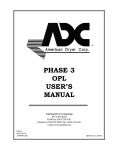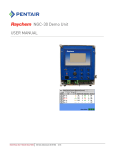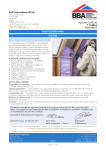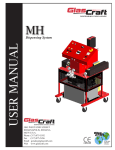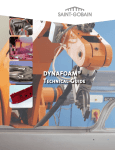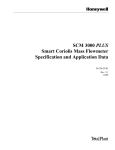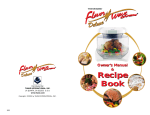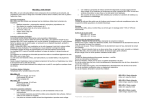Download Crack Repair Procedure - D-I-Y Urethane.indd
Transcript
D-I-Y Concrete Crack Polyurethane Resin Injection Repair Guide The information for waterproofing cracks in poured concrete has been compiled from several professional sources as recommended guidelines. Due to the variability in poured wall conditions, the selection of the proper material for the intended application and installation is the sole responsibility of the applicator. REPAIR KIT CONTENTS This kit includes all of the materials and accessories for low-pressure injection and repair of approximately 60 linear feet of cracks. • 6 dual cartridges RadonSeal 901 Crack Seal and Port Adhesive • 6 dual cartridges RadonSeal 102 Urethane Injection Foam • 1 syringe 455-0.5 Fast port adhesive/blow hole repair • Manual dispensing tool • 8 ¼ x 24 element mixers & 8 retaining nuts (for use with Injection Resin) • 6 crossover restrictors • 100 surface ports & caps • 10 corner ports & caps • 8 hose assemblies • 10 pair nitrile gloves • 1 plastic trowel & 1 wire brush • Safety glasses • 1 tool box • 1 squeeze bottle • Complete instructions & instructional CD • Product Data Sheets & MSDS/ How to use the Injection Tool TOOLS REQUIRED • Paper plate or scrap cardboard for mixing RadonSeal 901 Crack Seal and Port Adhesive. CRACK PREPARATION Place drop cloth on the floor in front of work area. Clean the surface surrounding the crack using the wire brush. Remove loose or flaking concrete, efflorescence, paint or coating to approximately 1-2 inches on either side of the crack. Wipe the surface clean of dust after brushing. The surface must be dry for proper installation of injection ports and surface seal. For best results if the surface is wet, wait until dry or if necessary, use a hot air gun, hair drier, or oil free compressed air to dry. SURFACE PORT PLACEMENT Starting at a point closest to the floor (vertical cracks), mark port locations on the wall. (Ports are placed apart the thickness of the concrete wall, usually about 8”. Center ports over the crack (no drilling necessary). SURFACE PORT ATTACHMENT AND CRACK SEALING 1. Prepare RadonSeal 901 Crack Seal & Port Adhesive by dispensing (using the Manual tool) a sufficient amount of the surface seal on to a paper plate or scrap piece of cardboard, mix with the supplied trowel (repeat this step each time you run out of mixed adhesive). 2. Remove the cap from the surface port, then apply a small amount of mixed adhesive to the bottom of the port base. Place the first port starting at the bottom of the crack and repeat every 8 inches until the entire crack is ported. NOTE! Do not allow epoxy to block the bottom of the port opening or the crack beneath the port. 3. The next step is to work the mixed surface seal epoxy paste along the entire length of the crack using the plastic trowel. The recommended epoxy paste application is 1/8” thick and 2” wide. Make sure to mound sufficient extra epoxy around the base of the ports. Expect to use 20 ounces per 10-foot of crack. Do not work the epoxy “into” the crack, just paste over the surface. 4. Let the surface seal and port adhesive cure before beginning injection, about 2-4 hours until fingernail hard. (Not recommended to wait overnight.) INJECTION PROCEDURE 1. Using the squeeze bottle, flush the crack with 1-2 cups of water poured into the top port. Water should come out of every port below the top port indicating that the crack is contiguous and that ports are not blocked by epoxy. Water is also useful to flush the crack and aid in resin activation. 2. Place the RadonSeal 102 Injection Foam dual cartridge in to the manual dispensing tool. Remove the plastic nut and then twist and pull to remove the plastic seal. Replace seal with restrictor, place the 1/4 X 24 mixing nozzle on top of restrictor over the end of the cartridge attaching with the plastic nut. 3. Attach the flexible hose assembly (wide end) over the mixer tip by pushing firmly. 4. For vertical cracks, attach the small end of the hose assembly into the lowest port by pressing firmly. For horizontal cracks begin at either end if one is not lower than the other. 5. Begin injecting slowly with low pressure (allowing the resin time to flow into and fill all small fissures) until the resin begins to flow from the port above it. Use the white plastic pinch valve on the hose assembly to turn off resin flow, plugging the first port with the cap provided, and move up to the next port. Repeat this procedure until the entire crack has been injected with RadonSeal 102 Urethane Foam. * The ports can be removed by striking with a hammer after foaming is complete in about 3 or 4 hours. Grind off the surface seal epoxy for a smooth finish. The surface seal epoxy is paintable if desired. Hint: To improve the ability to penetrate very small & hairline cracks, heat the injection urethane system by placing the injection cartridge in a pail of hot tap water for 15-20 minutes. This temperature exposure should thin the material so that it can flow into the crack with less resistance proceed as before. Note! The secret to effective crack injection is patient low-pressure introduction of the resin. Small or hairline cracks will require 3 - 4 minutes at each port for proper filling to take place. HOW TO USE THE INJECTION TOOL 1. Attach mixer to the tube set 2. Load the INJECTION TOOL as follows: • • • With the tool facing upward, slide dual cartridges in until the cartridge front and retaining nut are within the notch of the carriage. Line up the tube set with the pistons and begin squeezing the trigger handle slowly, making sure the drive rod is riding inside one of the cartridges, and the pistons are inserted directly into each tube. Hold the tool with installed tube set pointing upward; squeeze the trigger handle until the pistons make contact with the plungers, checking that the front is still locked in place. This will also remove any air trapped in the tube set. (Cannot stop material flow if air is trapped in cartridges) Begin squeezing NOTE: To release the pushrods depress the thumb plate while squeezing the trigger handle. This relieves the pressure on the thumb plate and allows the pushrods to release. OVER SQUEEZING OF TRIGGER HANDLE MAY CAUSE 1. Leaking of material from rear of cartridges. 2. Cutting of the drive rod. KEEP TOOL CLEAN - WIPE CLEAN EVERY TIME THE CARTRIDGES ARE CHANGED FOR BEST RESULTS DON’T LEAVE EMPTY OR PARTIALLY USED CARTRIDGE IN TOOL. RADONSEAL 102 HYDROPHOBIC URETHANE FOAM GENERAL DESCRIPTION RadonSeal 102 is a hydrophobic polyurethane liquid which is designed to stop water infiltration or exfiltration. When RadonSeal 102 meets water, it reacts with it and then repels it forming a closed cell foam barrier which will not allow water to pass through it. It adheres tenaciously to practically all substrates, wet or dry. RadonSeal 102 is typically used to stop water leaks coming through cracked or honeycombed concrete, voids between wall and floor, wall and ceilings, expansion joints, cold joints and pipe intrusions. It is used to repair concrete walls, ceilings and floors that are leaking. It is used in tunnel, manhole, sewer line, concrete dam and parking deck repairs. RadonSeal 102 is designed to be used when greater than 20% movement (expansion and contraction) of the substrate is anticipated or where epoxy is not considered as necessary. TEST TYPE DENSITY (CORE) RESULTS TEST METHOD FREE RISE 2.02 LBS/FT ASTM D-1622 LOW TEMPERATURE AGING (-20f) (SHRINKAGE) (SHRINKAGE) <4% <4% ASTM D-2126 1 DAY 7 DAYS WATER ABSORPTION (VOLUME CONFINED) <1% ASTM D-2127 34PSI ASTM C-273 150 PSI ASTM D-1623 275% ASTM D-1623 SHEAR STRENGTH TENSILE STRENGTH ELONGATION VISCOSITY % SOLID COLOR TDI CONTENT 100-200 CPS 100 AMBER 0% APPLICATIONS Package: RadonSeal 102 is furnished in various packages. Most typically are 21+ ounces dual cartridges or in 5-gallon pails. The use of cartridges is suitable for low-pressure injection with manual tools, or up to 250 psi dispensing, utilizing pneumatic dispensing tools. RADONSEAL 102 Page 1 of 2 Quantity to Use: It is difficult to determine the amount of material to adequately seal a given crack. Experience in home foundation cracks (8’ long with a wall thickness of 8-10”) suggest the usage of 10-21 ounces of RadonSeal 102 per 8' crack (versus an average of 30-50 ounces of epoxy). Thus, while RadonSeal 102 can theoretically foam to 20 times its volume, more typical is 2-3 times its unfoamed volume for small cracks (1/32 - 1/4") as often found in foundation cracks. Procedure: Step 1 - Cleaning/Sealing Crack Surface - When crack is contaminated on outside, it will be necessary to clean the crack surface, so the crack can be exactly located. If it is a wide crack or high water flows are encountered, it will be necessary to seal the surface of the crack with a surface sealing material (e.g., hydraulic cement; epoxy gel). Step 2A - Install Injection Packers (for high pressure injection) - Place the packer in the drilled 1/2" or 5/8" hole so that the top of the sleeve is just below the concrete surface. Tighten by a ratchet, socket or open-end wrench by turning clockwise as tightly as possible. Packers are supplied with a one-way ball valve or check valve. Step 2B - Install Surface Injection Ports (for low pressure injection) - Space the surface ports the width of the concrete (approximately every 8”) and place the surface ports directly over the crack. Bond with epoxy gel. Step 3 - Flush Crack - It is sometimes necessary to flush the crack with water to remove debris and drill dust out of the cracks. Flushing will tell you how the crack will behave during grout injection and the water will prime the crack for the chemical reaction to occur. This is most necessary if crack is dry at time of repair. Step 4 - Surface Seal Crack - Sometimes it may be necessary to surface seal the crack to prevent the unreacted grout from flowing back out. Use fast-setting hydraulic cement or epoxy gel to form a surface seal on crack. Step 5 - Injection of RadonSeal 102 - Begin the injection at the lowest packer (surface port) on a vertical crack, or at the first packer (surface port) flushed for a horizontal crack. During injection, you will notice that water is displaced from the crack by RadonSeal 102. Keep injecting until material appears at the adjacent packer (surface port). Disconnect and start injection at adjacent packer (surface port). After injecting a few packers, come back to the first packer and inject all the ports for the second time. Some of the ports may take some grout, which will fill up and further densify the crack. Injection pressure will vary from 20psi to 250psi depending on the width of the crack, thickness of concrete and condition of concrete. WARRANTY Recommendations concerning the performance or use of this product are based upon independent test reports believed to be reliable. If the product is proven to be defective, at the option of the Manufacturer, it will be either replaced or the purchase price refunded. The Manufacturer will not be liable in excess of the purchase price. The user will be responsible for deciding if the product is suitable for his application and will assume all risk associated with the use of the product. This warranty is in lieu of any other warranty expressed or implied, including but not limited to an implied warranty of merchantability or an implied warranty of fitness for a particular use. RADONSEAL 102 Page 2 of 2 MATERIAL SAFETY DATA SHEET MANUFACTURER: RADONSEAL, INC. 18 L’HERMITAGE DRIVE, SHELTON, CT 06484 EMERGENCY TELEPHONE 800-472-0603 SECTION I - PRODUCT IDENTIFICATION PRODUCT NAME: RADONSEAL 102 A SYNONYM: AROMATIC ISOCYANATE CHEMICAL FAMILY: POLYMERIC DIPHENYLMETHANE DIISOCYANATE DATE: FEBRUARY, 2010 SECTION II - HAZARDOUS INGREDIENTS AND OTHER COMPONENTS INGREDIENT % BY WEIGHT 4.4' Diphenylmethane diisocyanate (MDI) EXPOSURE LIMITS Trade Secret N.E. CAS # 101-68-8 SECTION III - PHYSICAL DATA Boiling Point: 406°F 5 mm Hg VP: < 10 - 5 (NW HG) VD: 1.5 (MDI) AIR = I Evaporation Rate: Slower than ethyl ether Solubility in Water: Resin reacts slowly to liberate C02 gas % Volatile by wt: ND Density: 10.31 LB/GAL SECTION IV - FIRE AND EXPLOSION HAZARD DATA Flash Point :398 DEG F' (method= PMCC) UEL: (%) N.D. Flammable Limits: LEL (%) N.D. Extinguishing Media: Dry chemical, carbon dioxide foam, water spray for large fires. SECTION V - HAZARDOUS SUMMARY This material is designed and intended to be pumped, not sprayed. MDI becomes more hazardous when atomized(sprayed). The following data is derived from tests performed when the material is sprayed and should be considered but may not apply to pumping operations as recommended by the manufacturer. Harmful if inhaled. Toxic fumes are released in fire situations. Dark brown liquid. Mild odor. NFPA Ratings: 0 = insignificant, 1 = slight, 2 = moderate, 3 = high, 4 = extreme Health 3 Flammability 1 Reactivity 1 HMIS Ratings: 0 = insignificant, 1 = slight, 2 = moderate, 3 = high, 4 = extreme Health 3 Flammability 1 Reactivity 1 PART A (CONT’D) Potential Health Effects: At room temperature, MDI vapors are minimal due to low vapor pressure. However, heating, foaming or otherwise dispersing (drumming, venting or pumping) operations may generate more vapor or aerosol concentrations of isocyanate. Excessive exposure may cause irritation of the eyes, upper respiratory tract and lungs. Severe overexposure may lead to pulmonary edema. Respiratory sensitization with asthma-like symptoms may occur in susceptible individuals. MDI concentration below the exposure guidelines may cause allergic respiratory reactions in individuals already sensitized. Symptoms may include coughing, dryness of throat, headache, nausea, difficulty breathing and feeling of tightness in the chest. Effects may be delayed. Impaired lung function (decreased ventilators capacity) has been associated with overexposure to isocyanate. Persons With Known Respiratory or Allergy Problems Must Not Be Exposed to This Product. Skin Contact: No irritation is likely to develop following short contact periods with skin. Prolonged or repeated exposure can cause skin irritation, reddening, dermatitis and in some individuals, sensitization. Skin contact may result in allergic skin reactions or respiratory sensitization but is not expected to result in absorption or amounts sufficient to cause other adverse effects. May stain skin. Eye Contact: As a liquid or dust may cause irritation, inflammation and or damage to sensitive eye tissue. Symptoms include watering or discomfort of eyes. Corneal injury is unlikely. Ingestion: Single dose oral toxicity is considered to be extremely low. Can result in irritation and corrosive action in mouth, stomach tissue and digestive tract. Chronic: As a result of previous repeated overexposure or a single large dose, certain individuals develop isocyanine sensitization (chemical asthma) or tissue injury in the upper respiratory tract. Animal tests indicate skin contact alone may also lead to allergic respiratory reaction. These effects may be permanent. Any person developing asthmatic reaction or other sensitization should be removed from further exposure. Carcinogenicity: MDI and polymeric MDI are not listed by the NTP, IARC or regulated by OSHA as carcinogens. Lung tumors have been observed in laboratory animals exposed to aerosol droplets of MDI/Polymeric MDI (6mg/m3) for their lifetime. Tumors occurred concurrently with respiratory irritation and lung injury. Current exposure guidelines are expected to protect against these effects. SECTION VI – FIRST AID MEASURES Eyes: Flush eyes with plenty of water for at least 15 minutes. Materials containing MDI may react with the moisture of the eye forming a thick material that may be difficult to wash from the eyes. Seek medical attention. Skin: Wash off in flowing water or shower. Remove and wash contaminated clothing and discard contaminated shoes. Seek medical attention if redness, itching or a burning sensation develops or persists after the area is washed. Ingestion: If swallowed, drink 1 or 2 glasses of water or milk. Do not induce vomiting unless directed to do so by medical personnel. If gastrointestinal symptoms develop, consult medical personnel. (Never give anything by mouth to an unconscious person.) Inhalation: Remove to fresh air. If not breathing, give artificial respiration. If breathing is difficult, oxygen should be administered by qualified personnel. Call a physician or transport to a medical facility immediately. NOTE TO PHYSICIAN: Eyes: Strain for evidence of corneal injury. If cornea is burned, instill antibiotic steroid preparation frequently. Workplace vapors have produced reversible corneal epithelial edema impairing vision. Skin: This material is a known skin sensitizer. Treat symptomatically as for contact dermatitis or thermal bums. If burned, treat as thermal burn. Ingestion: Treat symptomatically. There is no specific antidote. Inducing vomiting is contraindicated of the irritating nature of this product. SECTION VII – ACCIDENTAL RELEASE MEASURES Spill: Evacuate spill area. With adequate ventilation and appropriate personal protective equipment, cover the area with an inert absorbent such as clay or vermiculite and transfer to metal waste containers. Saturate with water or decontamination solution below, but do not seal the container with the isocyanate mixture. Larger quantities of liquid may be transferred directly to drums for disposal. Note: Isocyanate will react with water and generate carbon dioxide. This could result in the rupture of any closed container. Clean up: The area should then be flushed with a decontamination solution. The decontamination solution is a 5-10% mixture of sodium carbonate and .5% liquid detergent in water solution or a 3% concentrated ammonium hydroxide and .5% liquid detergent in water. Use 10 parts decontamination solution to 1 part spilled material. If the ammonium hydroxide solution is used, ammonia will be evolved as a vapor. Use caution to avoid exposure to high concentrations of ammonia. Allow to stand for 48 hours letting evolved carbon dioxide to escape. PART A (CONT’D) Disposal: Any disposal practice must be in compliance with all federal, state and local laws and regulations. Chemical additions, processing, storage, or otherwise altering this material may make the waste management information presented in this MSDS incomplete, inaccurate or otherwise inappropriate. Waste characterization and disposal compliance is the responsibility solely of the party generating the waste or deciding to discard or dispose of the material. Refer to RCRA 40 CFR 261 and/or any other appropriate federal, state or local requirements for proper classification information. Container Disposal: Drums/containers must be thoroughly drained to process or storage vessels before removal to an appropriate area for subsequent decontamination. Drums/containers must be decontaminated in properly ventilated areas by personnel protected from the inhalation of isocyanate vapors. Spray or pour 1 to 5 gallons of decontamination solution into the drum making sure the walls are well rinsed. Let the drum/container soak unsealed for 48 hours. Pour out the decontamination solution and triple rise the empty container. Puncture or otherwise destroy the rinsed container before disposal. Do not heat or cut empty containers with electric or gas torch. SECTION VIII – STORAGE AND HANDLING Storage: When stored between 60ºF and 85ºF (15º and 30ºC) in sealed containers, typical shelf life is 6 months or more from the date of manufacture. Consult technical data sheet for shelf life requirements affecting performance quality. Should freezing occur, the material must be thawed thoroughly and mixed until uniform. Opened containers must be handled properly to prevent moisture contamination. Heating: Use personal protective equipment when transferring material to or from drums, totes or other containers. Safety glasses and gloves are the minimum protection. Additional precautions must be used when splash hazards are present. The reaction of polyols and isocyanates generate heat. Contact of the reacting materials with skin or eyes can cause sever burns and may be difficult to remove from the affected areas. Immediately wash affected areas with plenty of water and seek medical attention. In addition, such contact increases the risk of exposure to isocyanate vapors. Do not smoke or use naked lights, open flames, space heaters or other ignition sources near pouring or frothing operations. SECTION IX – EXPOSURE CONTROL Exposure: MDI contains reactive isocyanate groups. Use with adequate ventilation to keep airborne isocyanate level below TLV or 0.005 ppm TWA (ACGIH) and PEL 0.02 ppm ceiling (OSHA). These control limits do not apply to previously sensitized individuals or to individuals with existing respiratory disease, such as bronchitis, emphysema or asthma. Respiratory protection may be needed where material is heated, sprayed or used in confined space, or if TLV is exceeded. Never try to detect MDI vapor by odor. Persons with known respiratory or allergic problems must not be exposed to this product. Ventilation: MDI has a very low vapor pressure at room temperature. General/local ventilation typically controls exposure levels very adequately. More aggressive engineering controls or personal protective equipment may be required in some applications such as heating. Monitoring is required to determine engineering controls. Respiratory Protection: A supplied air, full face piece, positive pressure or continuous flow respirator or a supplied air hood is required when airborne concentrations are unknown or exceed threshold values. A positive pressure self-contained breathing apparatus can be used in emergencies or other unusual situations. All equipment must be NIOSH/MSHA approved and maintained. Air purifying (cartridge type) respirators are not approved for protections against isocyanates. Eye Protection: Chemical splash goggles or safety glasses or full face shield must be used consistent with splash hazard present. If vapor exposure causes eye discomfort, use a full-face piece respirator or air supplied hood. Protective Clothing: Wear clothing and gloves impervious to MDI under conditions of use. Materials may include butyl rubber, nitrile rubber, neoprene and Saranex coated Tyvek. SECTION X – STABILITY AND REACTIVITY Stability: Polyisocyanates are highly reactive chemicals and should be handled and stored in a way to avoid exposure to many common substances, including water and moisture. Material is stable when stored in sealed containers under normal conditions. Avoid extended exposure over 110ºF (45ºC). Hazardous Polymerization: May occur with incompatible reactants especially strong bases, water or temperatures over 320ºF (160ºC). Possible evolution of carbon dioxide gas from overheating or exposure to contaminants - may rupture closed containers. PART A (CONT’D) Reactivity: Reacts with water, acids, bases, alcohols, metal compounds. The reaction with water is very slow under 102ºF (50ºC), but is accelerated at higher temperatures and in the presence of alkalis, tertiary amines and metal compounds. Some reactions can be vigorous or even violent. SECTION XI – SHIPPING INFORMATION DOT(Domestic surface): Not regulated (Class 55) IMO(Ocean): Not regulated ICAO(AIR): Not regulated SECTION XII – REGULATORY INFORMATION OSHA Status: This product is hazardous under the criteria of the Federal OSHA Hazard Communications Standard 29 CFR 1910.1200. TSCA Status: On the TSCA inventory CERCLA Reportable Quantity: 4,4, Diphenylmethane Diisocyanate = 5,000 lbs. SARA Title III Section 302 Extremely Hazard Substances: None Section 311/312 Hazard Categories: Immediate Health Hazard, Delayed Health Hazard, Reactive Hazard Section 313 Toxic Chemicals: 4,4 Diphenylmethane Diisocyanate (MDI) CAS # 101-68-8 ca 100% RCRA Status: MDI is not a hazardous waste. However, under RCRA, it is the responsibility of the user of products to determine, at any time of disposal, whether a product meets any of the criteria for hazardous waste. This MSDS complies with 29 CFR 1910.1200 (hazard communication standard). Read MSDS and safety/handling sheet before use. All statements, technical information and recommendations contained herein are based upon available scientific test or data which we believe to be reliable since we cannot anticipate all conditions under which this information and our products or the products of other manufacturers in combination with our products may be used. RadonSeal makes no warranties, express or implied, and assumes no responsibility in connection with any use of this information. MATERIAL SAFETY DATA SHEET MANUFACTURER: RADONSEAL, INC. 18 L’HERMITAGE DRIVE, SHELTON, CT 06484 EMERGENCY TELEPHONE 800-472-0603 SECTION I - PRODUCT IDENTIFICATION PRODUCT NAME: RADONSEAL 102 B SYNONYM: CHEMICAL FAMILY: POLYOL BLEND DATE: FEBRUARY, 2010 SECTION II - HAZARDOUS INGREDIENTS AND OTHER COMPONENTS INGREDIENT NONE % BY WEIGHT EXPOSURE LIMITS CAS # SECTION III - PHYSICAL DATA Boiling Point: N.A. VP: Nd VD: Heavier Than Air Solubility in Water: Partial Evaporation Rate: Slower than Ethyl Ether % Volatile by Wt: <3% Specific Gravity: 1.08 Flash Point: > 200º F SECTION IV – HAZARDOUS SUMMARY Emergency Overview: Harmful if inhaled. Toxic fumes are released in fire situations. Clear yellow liquid. Inhalation: Heating, foaming or otherwise mechanically dispersing (drumming, venting or pumping) operations of this blend may generate more vapor or aerosol concentrations of its components. This blend contains tertiary amine amounts less than what is required to report as hazardous, however the tertiary amine component is severely irritating to the upper respiratory tract and mucous membranes of the nose and throat and can result in coughing, chest discomfort and headache. Skin Contact: Prolonged contact may lead to burning associated with severe reddening, swelling and tissue destruction. Eye Contact: This blend will cause irritation on contact. Symptoms include watering or discomfort of the eyes with marked excess redness and swelling of the conjunctiva and chemical bums of the cornea. Tertiary amines can produce a blurring of vision against a general bluish haze and the appearance of halos around bright objects (referred to as "blue haze”). Tertiary amines can also cause severe conjunctivitis. Ingestion: The tertiary amines, from this blend could cause severe irritation and possible chemical burns of the mouth, throat, esophagus and stomach with pain or discomfort in the mouth, throat, chest and abdomen. Symptoms include nausea, vomiting diarrhea, thirst, circulatory collapse and coma. Carcinogenicity: The components of this blend are not listed by the NTP, IARC or regulated by OSHA as carcinogens. SECTION V – FIRST AID MEASURES Ingestion: Induce vomiting by giving two glasses of water and sticking finger down throat. Never give anything by mouth to an unconscious person. Inhalation: Remove to fresh air. If not breathing, give artificial respiration. If breathing is difficult, oxygen should be administered by qualified personnel. Call a physician or transport to a medical facility immediately. PART B (CONT’D) SECTION VI – FIRE FIGHTING MEASURES Flash Point: NDA Autoiginition temperature: NDA NFPA: Combustible Class III B Flammable limits: (STP): NDA Fire Degradation Products: Toxic fumes are released in fire situations. Combustion may produce carbon dioxide, carbon monoxide and nitrogen oxides. Extinguishing Media: Use dry chemical foam, carbon dioxide, halogenated agents or water. Use cold water spray to cool containers exposed to fire to minimize risk of rupture. A solid stream of water directed into the hot burning liquid could cause frothing. If possible, contain fire run-off water. Protective equipment: Wear positive pressure self contained breathing apparatus with full face piece and full protective clothing. SECTION VII – ACCIDENTAL RELEASE MEASURES Spills: Evacuate spill area. Remove all sources of flames, heating elements, gas engines, etc. Emergency cleanup personnel should wear chemical goggles, rubber or plastic gloves and clothing as required to protect against contact. If mist and or hot vapors are present, use air purifying respirator or self-contained breathing apparatus as required. The type of respirator selected should prevent exposure from traces of propylene oxide which may be present. Prevent spreading and contamination of surface waters and drinking supplies. Notify local health officials and other appropriate agencies if such a contamination should occur. Clean Up: With adequate ventilation and appropriate personal protective equipment, cover the area with an inert absorbent material such as clay or vermiculite and transfer to steel waste containers. The spill area should then be washed down with soap and water to dilute and remove traces of material. Ventilate area to remove the remaining vapors. Disposal: Any disposal practice must be in compliance with all federal, state and local laws and regulations. Chemical additions, processing, storage, or otherwise altering this material may make the waste management information presented in this MSDS incomplete, inaccurate or otherwise inappropriate. Waste characterization and disposal compliance is the responsibility solely of the party generating the waste or deciding to discard or dispose of the material. Refer to RCRA 40 - CFR 261 and/or any other appropriate, federal, state or local requirements for proper classification information. Container Disposal: Empty containers retain product residue (liquid and/or vapor) and can be dangerous. Do not pressurize, or expose such containers to heat, flame, sparks, static electricity or other sources of ignition. All containers should be disposed in an environmentally safe manner and in accordance with government regulations. SECTION VIII – STORAGE AND HANDLING Storage: When stored between 60ºF and 85ºF (15º and 30ºC) in sealed containers, typical shelf life is 6 months or more from the date of manufacture. Consult technical data sheet for shelf life requirements affecting performance quality. Should freezing occur, the material must be thawed thoroughly and mixed until uniform. Opened containers must be handled properly to prevent moisture contamination. Heating: Use personal protective equipment when transferring material to or from drums, totes or other containers. Safety glasses and gloves are the minimum protection. Additional precautions must be used when splash hazards are present. The reaction of polyols and isocyanates generate heat. Contact of the reacting materials with skin or eyes can cause sever burns and may be difficult to remove from the affected areas. Immediately wash affected areas with plenty of water and seek medical attention. In addition, such contact increases the risk of exposure to isocyanate vapors. Do not smoke or use naked lights, open flames, space heaters or other ignition sources near pouring or frothing operations. SECTION IX – EXPOSURE CONTROL Ventilation: General/local ventilation typically controls exposure levels very adequately. More aggressive engineering controls or personal protective equipment may be required in some applications such as heating. Monitoring is required to determine engineering controls. Respiratory Protection: The specific respirator selected must be based on contamination levels of this blend found in the workplace and must not exceed the working limits of the respirator and be jointly approved by NIOSH/MSHA. Air purifying respirators equipped with full faced organic vapor cartridges can be used only if isocyanate vapors are not present from the "A” component. In area of high concentrations, fresh air supplied respirators or self-contained breathing apparatus should be used. A positive pressure self-contained breathing apparatus can be used in emergencies or other unusual situations. PART B (CONT’D) Eye Protection: Chemical splash goggles or safety glasses or full face shield must be used consistent with splash hazard present. If vapor exposure causes eye discomfort, use a full-face piece respirator or air supplied hood. Contact lenses should not be worn by persons who work with this product. Protective Clothing: Wear clothing and gloves impervious to .MDI under conditions of use. Materials may include butyl rubber, nitrile rubber, neoprene and Saranex coated Tyvek. Other Protective Equipment: An eyewash station and safety shower or other drenching facilities are recommended in the work area. SECTION X – STABILITY AND REACTIVITY Stability: This is a stable material. Avoid high temperatures, sparks, flame and wended exposure over 110ºF Hazardous Polymerization: Will occur. Reactivity: Incomplete with oxidizing materials, isocyanates and acids. SECTION XI – REGULATORY INFORMATION CERCLA and SARA Regulations (40 CFR 355, 370 and 372): Section 313 Supplier Notification: This product contains the following toxic chemicals subject to the reporting requirements of Section 313 of the emergency Planning and Community Right to Know Act of 1996 and of 40 CFR: None Section 311/312: NA Dot Classifications: Domestic Surface Not regulated Air/Sea Export Not regulated NFPA Ratings: 0 = insignificant, 1 = slight, 2 = moderate, 3 = high, 4 = extreme Health 1 Flammability 1 Reactivity 1 HMIS Ratings: 0 = insignificant, 1 = slight, 2 = moderate, 3 = high, 4 = extreme Health 2 Flammability 1 Reactivity 1 All statements, technical information and recommendations contained herein are based upon available scientific test or data which we believe to be reliable since we cannot anticipate all conditions under which this information and our products or the products of other manufacturers in combination with our products may be used. RadonSeal makes no warranties, express or implied, and assumes no responsibility in connection with any use of this information. RADONSEAL 901 SURFACE SEAL & 1:1 EPOXY PASTE GENERAL DESCRIPTION RADONSEAL 901 1:1 is a high modulus epoxy gel designed to anchor dowel and tie bars into concrete pavement. It is also ideal for surface sealing of cracks prior to injection. It can also be used for bonding miscellaneous materials to concrete where a fast cure is required. RADONSEAL 901FDA 1:1 is moisture insensitive and will cure in damp environments. In addition to normal packaging, RADONSEAL 901 1:1 can be supplied in dual component, quick mix cartridges. USES A) Anchoring dowel and tie bars into concrete pavement B) Setting parking bumpers C) Surface sealing AREAS OF APPLICATION As with any epoxy adhesive, surface preparation is critical. Concrete surfaces should be cleaned by sandblasting, water blasting or other mechanical means. All loose or unsound material must be removed. If patching, the outer perimeter of the spall should be saw cut or chipped to near vertical. Surfaces should be dry and dust free to insure a superior bond. RADONSEAL 901 1:1 will cure in the presence of moisture although application onto wet surfaces is not recommended. CLEAN UP Use M.E.K. Xylene, or any other solvent. Clean equipment immediately after use. SAFETY PRECAUTIONS This product can cause skin irritation. Always wear protective clothing. Wash contaminated area with soap and water never solvent. In case of eye contact, flush with water for 15 minutes; immediately see a physician. RADONSEAL 901 1:1 Page 1 of 2 TECHNICAL DATA RADONSEAL 901 1:1 PROPERTIES Solids by Volume Color Shelf Life Weight by Gallon Mix Ratio (Vol) Pot Life: (3 oz) Gel Time (5 mil) Final Cure Viscosity Hardness (Shore) Ultimate Pull Out Strength PART A 100% White 1 year 9.9 - 10.1 lbs -------------------------------------------------- PART B 100% Black 1 year 9.9 - 10.1 lbs -------------------------------------------------- MIXED ______ Grey -------9.9 - 10.1 lbs 1:1 10-20 minutes 1-2 hours 1-3 days Non sag gel 80-D 18,000 lbs (Concrete Failure) PHYSICAL PROPERTIES Tensile Strength, ASTM D-638 6,000 psi Tensile Elongation ASTM D-638 3-4% Compressive Strength ASTM D-695 13,500 psi Bond Strength ASTM C-321 2,400 psi Flexural Strength ASTM D-790 8,000 psi Deflection temp ASTM D - 648 190ºF WARRANTY Recommendations concerning the performance or use of this product are based upon independent test reports believed to be reliable. If the product is proven to be defective, at the option of the Manufacturer, it will be either replaced or the purchase price refunded. The Manufacturer will not be liable in excess of the purchase price. The user will be responsible for deciding if the product is suitable for his application and will assume all risk associated with the use of the product. This warranty is in lieu of any other warranty expressed or implied, including but not limited to an implied warranty of merchantability or an implied warranty of fitness for a particular use. RADONSEAL 901 1:1 Page 2 of 2 MATERIAL SAFETY DATA SHEET MANUFACTURER: RADONSEAL, INC. 18 L’HERMITAGE DRIVE, SHELTON, CT 06484 EMERGENCY TELEPHONE 800-472-0603 SECTION I - PRODUCT IDENTIFICATION PRODUCT NAME: RADONSEAL 901FDA, PART A SYNONYM: THERMOSETTING RESIN CHEMICAL FAMILY: MODIFIED EPOXY RESIN DATE: FEBRUARY, 2010 SECTION II - HAZARDOUS INGREDIENTS AND OTHER COMPONENTS INGREDIENT % BY WEIGHT EXPOSURE LIMITS CAS # Bisphenol a/diglycidyl Ether Resin 50-90 NE. 25068-38-6 Inert Powder 10-50 NE. 14807-96-6 Fumed silica 0-5 067762-90-7 SECTION III - PHYSICAL DATA Boiling Point: >200°F VP: >1 TORR @ 180°C VD: >1 (air = 1) Evaporation Rate: <1 (butyl acetate = 1) Solubility in Water: Insoluble SP GR: 1.32 (water = 1) % Volatile by VL: NIL SECTION IV - FIRE AND EXPLOSION HAZARD DATA Flash Point: >200°C Flammable Limits: Acrid smoke/fumes Extinguishing Media: Carbon dioxide, dry chemicals, foam, water spray. Explosive Limits: LEL – NE Special fire fighting procedures: Use self-contained breathing apparatus. Unusual fire and explosion hazards: Decomposition and combustion products may be toxic. SECTION V – HEALTH HAZARD DATA Primary Route(s) of Entry: Inhalation, skin contact Toxicological Data: LD SOs provided are the lowest values for type of bisphenol A diglycidal ether resins used. Oral LD0: (rabbit) > 4000 mg/kg Skin Irritation: (rabbits) Moderate irritation Eye Irritation: (rabbits) Mild irritation Sensitization: Sensitizer PART A (CONT’D) Effects of Overexposure: Irritation, sensitization, and dermatitis. Medical Conditions Generally Aggravated by Exposure: Allergy, eczema, skin conditions Carcinogenicity: None of the components of this material are listed as carcinogens by NTP, IARC, or OSHA. In order to comply with California Proposition 65, we feel obligated to advise that some of our products may conceivably contain trace contaminants of some of the listed chemicals. While not necessarily added to our products as ingredients, some listed chemicals may be present in the raw materials from suppliers and over which we have no control. Therefore, even though some of the listed substances may not be present, a significant risk as defined by the regulations in order to comply with California law, we feel obligated to make the following statement: WARNING: Our products may contain trace amounts of some chemicals considered by the State of California to be carcinogens or reproductive toxicants. Emergency and first aid procedures: Eyes: Flush with water for at least 15 minutes. If any ill effects develop, seek medical attention. Skin: Wash with soap and water. Wash contaminated clothing before reuse. Inhalation: Remove to fresh air and give oxygen if breathing is difficult. Ingestion: Give large quantities of water and induce vomiting. Get medical attention. SECTION VI – REACTIVITY DATA Stability: Stable Conditions to Avoid: Elevated temperatures Incompatibility Materials to Avoid: Strong oxidizers, strong acids or bases in bulk. Hazardous Decomposition Products: Carbon monoxide, carbon dioxide, aldehydes and other organics. SECTION VII - SPILL OR LEAK PROCEDURES Steps to be taken in case material is released or spilled: Avoid all personal contact. Wipe with rag for small spills. For larger spills, use absorbent material. Collect waste in designated container. Flush contaminated areas with water. Waste Disposal Method: Dispose in accordance with federal, state and local regulations. SECTION VIII - SPECIAL PROTECTION INFORMATION Respiratory Protection: Avoid breathing vapors. Use adequate ventilation. Ventilation: Good mechanical ventilation and local exhaust. Eye Protection: Safety glasses. Protective Gloves: Rubber or polyethylene. Protective Equipment: Disposable containers and paper on work area. Use of barrier cream recommended. Use appropriate equipment to prevent eye or skin contact. SECTION IX - SPECIAL PRECAUTIONS Precautions to be taken in handling and storage: Causes irritation. May cause allergic skin reaction. Avoid contact with eyes, skin or clothing. Store in cool, dry area in closed cartridges. Other precautions: Avoid breathing vapors, use with good ventilation. Wash hands thoroughly with soap and water after every use. Health 2 Flammability 1 Reactivity 0 Personal Protection B All statements, technical information and recommendations contained herein are based upon available scientific test or data which we believe to be reliable since we cannot anticipate all conditions under which this information and our products or the products of other manufacturers in combination with our products may be used. RadonSeal makes no warranties, express or implied, and assumes no responsibility in connection with any use of this information. MATERIAL SAFETY DATA SHEET MANUFACTURER: RADONSEAL, INC. 18 L’HERMITAGE DRIVE, SHELTON, CT 06484 EMERGENCY TELEPHONE 800-472-0603 SECTION I - PRODUCT IDENTIFICATION PRODUCT NAME: RADONSEAL 901FDA, PART B SYNONYM: EPOXY HARDENER CHEMICAL FAMILY: MODIFIED POLYAMINE DATE: FEBRUARY, 2010 SECTION II - HAZARDOUS INGREDIENTS AND OTHER COMPONENTS INGREDIENT % BY WEIGHT EXPOSURE LIMITS CAS # Proprietary Polyamine/polyamide blend <70 NE. UK Inert Powders 60-80 NE. 14807-96-6 Fumed silica 0-5 NE. 067762-90-7 SECTION III - PHYSICAL DATA Appearance: Paste Boiling Point: Not Determined (>200°F) VP: N.D. VD: Not determined (air = 1) Evaporation Rate: <1 (butyl acetate = 1) Solubility in Water: Appreciable Color: Black SP GR: >1.91 +/- .02 (water = 1) % Volatile by VL: <1 Odor: Skunk like, pinc -0. 1 SECTION IV - FIRE AND EXPLOSION HAZARD DATA Flash Point: 185°F (PMCC) Flammable Limits: Unknown Extinguishing Media: Foam, dry chemicals, C02 Special fire fighting procedures: Avoid breathing smoke. Use self-contained breathing apparatus. SECTION V – HEALTH HAZARD DATA Primary Route(s) of Entry: Inhalation, skin contact Toxicological Data: Polyamine Resin Oral LD0: (rat) LD50-<5 CC/KG Skin Irritation: (rabbits) Mild irritant Eye Irritation: (rabbits) Conjunctival irritant Effects of Overexposure: Acute: Will cause burns to skin and eyes. High concentrations of vapor can cause irritation of respiratory tract, nausea, and vomiting. Chronic: Prolonged or repeated exposure may cause asthma and skin sensitization or other allergic response. Medical Conditions Generally Aggravated by Exposure: Allergy, eczema, skin conditions Carcinogenicity: None of the components of this material are listed as carcinogens by NTP, IARC, or OSHA. PART B (CONT’D) In order to comply with California Proposition 65, we feel obligated to advise that some of our products may conceivably contain trace contaminants of some of the listed chemicals. While not necessarily added to our products as ingredients, some listed chemicals may be present in the raw materials from suppliers and over which we have no control. Therefore, even though some of the listed substances may not be present, a significant risk as defined by the regulations in order to comply with California law, we feel obligated to make the following statement: WARNING: Our products may contain trace amounts of some chemicals considered by the State of California to be carcinogens or reproductive toxicants. Emergency and first aid procedures: Eyes: Flush with water for at least 15 minutes. Seek medical attention. Skin: Immediately deluge skin with plenty of water. Remove contaminated clothing and shoes. Inhalation: Remove to fresh air and give oxygen if breathing is difficult. Seek medical attention Ingestion: If swallowed and conscious, give plenty of water and induce vomiting. Seek medical attention. SECTION VI – REACTIVITY DATA Stability: Stable Conditions to Avoid: Mixing with oxidizers or epoxy resins in quantities over 1#. Incompatibility Materials to Avoid: Strong oxidizing agents, acids. Hazardous Decomposition Products: Carbon monoxide, carbon dioxide, nitrogen oxides. Hazardous Polymerization: Will not occur. SECTION VII - SPILL OR LEAK PROCEDURES Steps to be taken in case material is released or spilled: Soak up with inert material or scrape up. Collect waste in designated waste containers. Avoid personal contact. Flush contaminated area with water. Waste Disposal Method: Dispose in accordance with federal, state and local regulations. SECTION VIII - SPECIAL PROTECTION INFORMATION Respiratory Protection: Avoid breathing vapors. Use adequate ventilation. Ventilation: Normal ventilation should be adequate. Local if vapors are vented. Eye Protection: Safety glasses. Protective Gloves: Rubber or impervious gloves recommended. SECTION IX - SPECIAL PRECAUTIONS Precautions to be taken in handling and storage: Store away from head and open flame. Other precautions: Avoid breathing vapors of heated material. Wash hands with soap and water after every use. Adequate ventilation: Keep containers tightly closed when not in use. Health Flammability Reactivity Personal Protection 2 1 0 B All statements, technical information and recommendations contained herein are based upon available scientific test or data which we believe to be reliable since we cannot anticipate all conditions under which this information and our products or the products of other manufacturers in combination with our products may be used. RadonSeal makes no warranties, express or implied, and assumes no responsibility in connection with any use of this information

















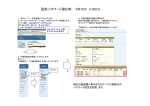

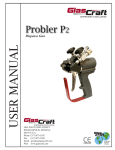
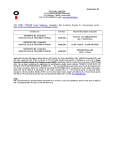

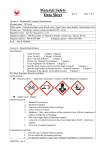
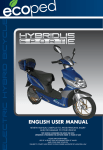
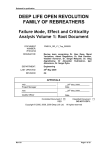
![KeyView [4823353_1.wpd]](http://vs1.manualzilla.com/store/data/005667242_1-589c8deb81b55e7c0d34a0d078158765-150x150.png)
